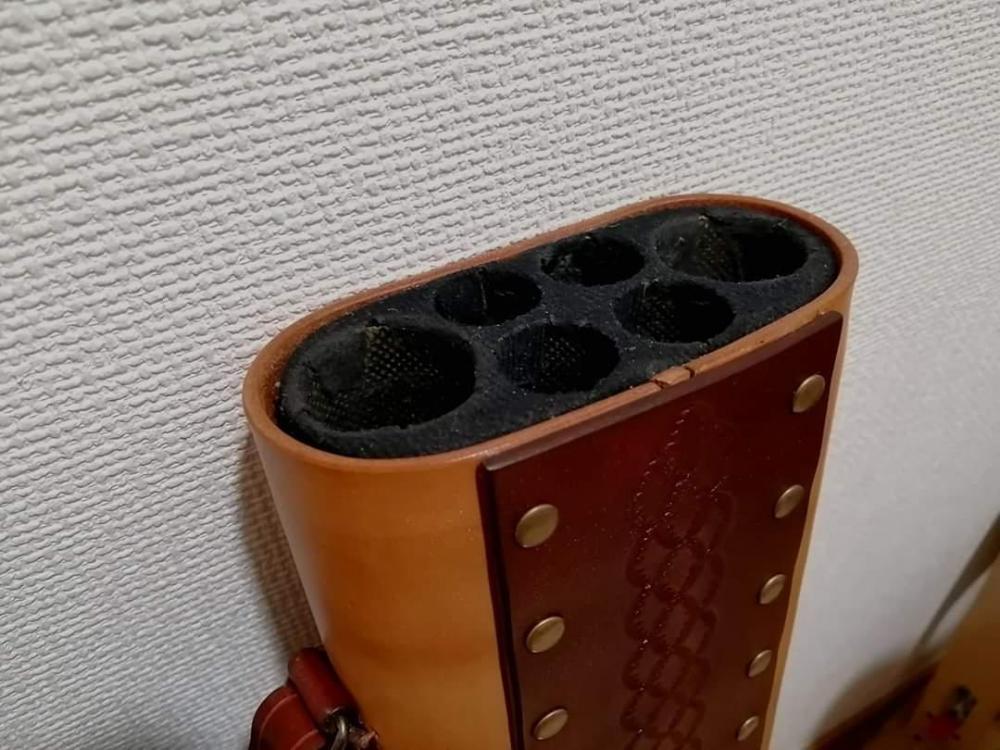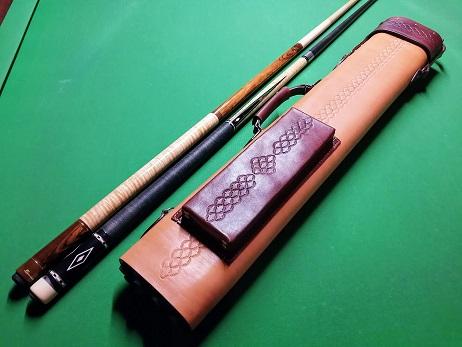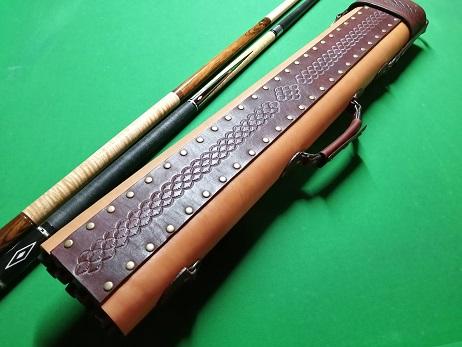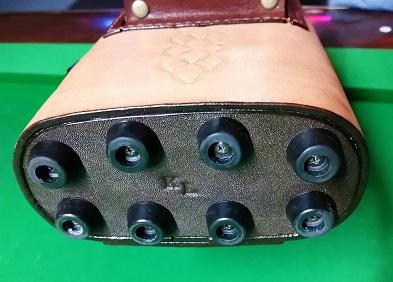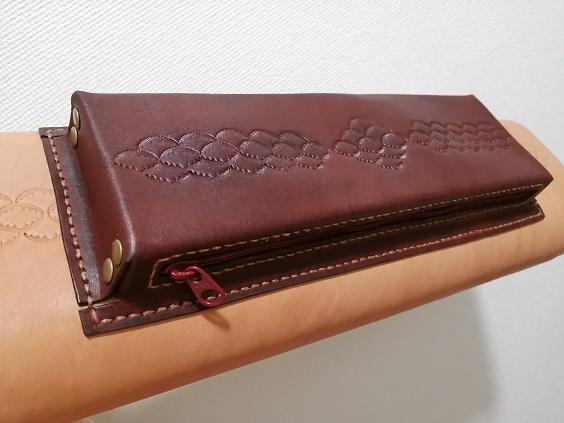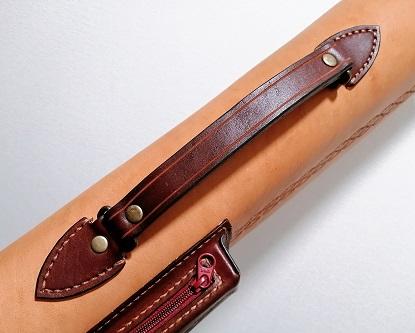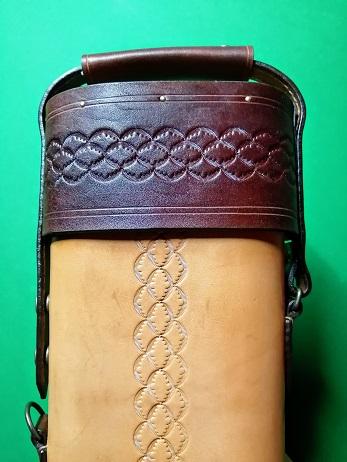
victorl
Members-
Posts
38 -
Joined
-
Last visited
Content Type
Profiles
Forums
Events
Blogs
Gallery
Everything posted by victorl
-
Holster for a great friend
victorl replied to rocketcity's topic in Gun Holsters, Rifle Slings and Knife Sheathes
Looks great! What kind of laser equipment are you using? -
Basic wallet
victorl replied to Wykoni's topic in Purses, Wallets, Belts and Miscellaneous Pocket Items
Doesn't look very basic to me! Well done! -
From the comments, it looks like there are quite a few people here who want to make their own cue cases. I would definitely love to see what you guys come up with, and it would definitely get me motivated to do another case as well. I have some other cue case ideas I want to try as well, such as an envelope or quiver-style case, but wanted to make sure I could build a standard case first before attempting something original.
-
Thanks for the comment. It does kind of look like an older Dale Perry, but it's actually an early 90's Falcon. The other cue is a custom Lomax jump/break.
-
Thank you! I love those old George cases, simple but super classy. To answer your question the interior is just molded foam tubing taken from an old case. It's not the greatest protection, but it weighs next to nothing so the case is super light at around 3.5 pounds. But, if I ever do another case, I will probably use one of those Ultrapad interiors that John Barton sells on his site.
-
Yes, it was definitely a lot more work than I expected. Nothing really went according to plan, so I was constantly making changes and adjustments to the original plan. Even just getting the right hardware and the correct tools for them was a lot more complicated than I thought, but it was a great learning experience. Some things I would do change for a future project: - Add more volume to the pocket for more storage and ease of use. - Use block-dyeing and antiquing to better highlight the tooling. - Measure and sew everything while the body is still flat and unformed to make sewing easier. - Get some better thread for cleaner and easier sewing. (I used waxed hemp thread for this project) - Get a electric burnishing tool to save time. I don't want to think about how many hours I spent just on sanding and burnishing edges.
-
It's glued together, then screwed into place. The screws attaching the rubber feet are extra long so they go right through the leather bottom and into a wooden plate that is mounted to the bottom of the inner tubing.
-
Spent my time stuck at home for the past few months on my first attempt at building a cue case. Most of the ideas are borrowed from the popular cue case makers, like Jack Justis and J. Flowers. I used Tochigi vegtan leather, and the colors are natural /mahogany. It was my first time doing a project this large, so it was pretty challenging, but it turned out pretty decent I think.
-
Newbie Question - Accuracy Dying Inside Stamped Letters
victorl replied to bob21804's topic in How Do I Do That?
Some great ideas in this thread! Also, it's kind of the opposite of what you're looking for, but another way to highlight your lettering would be block dying which is very easy to do and looks great. -
Havent made any parts yet, but I've pretty much planned out what I want to do for my case. I'm mostly just concerned about getting all the measurements down and have everything come together right. If you've got any pointers from your experience making your case, I'm all ears!
-
Thanks for that. I was planning to make a cue case when I first started too, but ended up busy with other projects along the way. I'll get to it someday. Would love to see yours too when you get it done!
-
I've been experimenting with different combinations to get more adventurous with my color choices and I just want to ask, what are some your favorite leather-thread color combinations?
-
Bonding/glueing But Not Stitching For A Belt ?
victorl replied to CustomDoug's topic in Leatherwork Conversation
Like the above poster said, it might be look great at first, but probably just a matter of time before it fails. No stitching may work on a tray or something that's meant to lay flat, but on a belt, you've got two pieces of leather constantly pulling at each other, so glue just won't cut it. -
I own a few other good leather knives, but this has become my favorite as it cuts super smooth and I find the handle is very comfortable to hold. The blade is hand-forged blue steel and is a bit thicker than I was used to, but it's very sturdy and keeps its edge longer than my other knives. I'm not very good at sharpening so I can't get it razor sharp like when it first arrived, but I can still get it more than sharp enough to cut and skiv with ease. Definitely a great bargain for the price, and I imagine it would probably sell for a lot more if sold in a store.
-
I sometimes use markers on my edges as well, but just to touch up after dyeing to even the color out and take care of any missed spots. I think one issue is that the marker looks good on the surface, but doesn't penetrate as deeply as actual dye would, so I don't think the color would hold up well after some wear and tear. That's just my opinion though, and some of the more experienced members might have a better answer for you.
-
I live in the Tokyo area and there are a lot of places that sell leathercraft goods... you've got the major distributors like CraftSha, Seiwa and Kyoshin Elle, and plenty of smaller distributors as well. They're mostly concentrated in the Asakusabashi area in Eastern Tokyo. I regularly shop at a leathercraft store called Takara Sangyo and if you like, we could go together sometime and you can use my member's card to get 20% off everything in the store. For knives, Iwataya is amazing and for top-of-the-line stuff to drool over, you should give Kanesoh in Asakusa a visit (www.kanesoh.com). Cheers, Vic
-
I live in Japan and I had the same problem finding top-shelf left-handed knives. I eventually found a traditional Japanese blacksmith who specializes in high-end woodcarving tools but also makes a mean leather knife. I had him make me a knife that's symettrical in shape (3rd from the right in the picture) so it can be used with both hands. Even though it's made from scratch, it only cost about 70 bucks and is very solid with an edge that keeps very well. If you're interested, I can give you his info (not sure if he speaks English) or could even have him make one for you when I order more tools from him. He has a facebook page too: https://m.facebook.com/pages/小倉彫刻刃物製作所/562663520411785
-
I was browsing some Japanese TV shows and I came across a video of Japanese leather tool factory where they show how their stitching chisels are made. It's the factory that makes chisels for Seiwa and Kyoshin Elle. It was quite an eye opener as I assumed they were made by automated machines, but actually made mostly by hand, each chisel requiring a lot of work and skill to make. The machines in the factory are all taken from an old metal factory and repurposed for tool making. Quite amazing to see, really. (starts around the 48:10 mark)
-
I'm a computer programmer for a Japanese company. Leatherwork is my escape from the computer screen and virtual reality... nothing like getting home from work, sitting down with a glass of scotch and making something real with my hands.
-
I've had some bad experiences with trying to dye lighter colors on leather... For tan-colored projects, I prefer to use a light coat of pure neatsfoot with some sunshine for a easy, natural look.
-
To answer some questions: You can get it at goodsjapan.com or leathercrafttools.com. It also comes in black and brown in addition to clear. Personally, I use a wood slicker and/or canvas for edges and glass for burnishing the flesh side. I get the best results when I let it dry and become more gummy for a few minutes before burnishing.
- 17 replies
-
- burnishing
- gum
-
(and 5 more)
Tagged with:
-
I'm in Japan and you're right, Tokonole is the preferred burnishing compound over here. I use it on the flesh side and on most of my edges. Great product, burnishes up nicely and holds up well over time.
- 17 replies
-
- burnishing
- gum
-
(and 5 more)
Tagged with:
-
Just wanted to add a couple things: -You need to work fairly quickly to wipe the excess oil off before it has a chance to fully soak into the surface -Like with antiques, make sure that the oil gets into all the crevices so everything is properly highlighted If you find places where the tooling isn't well-highlighted, you can quickly oil and wipe to highlight it. -After it dries, you can go over the piece again to get a darker look and better highlighting. (Sunlight has a similar effect as well)


